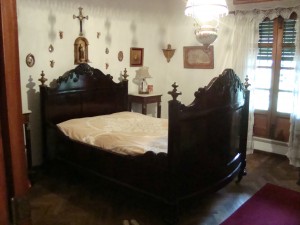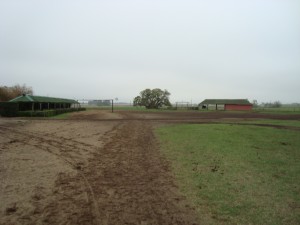Today the class started the day taking a tour of the Jewish neighborhoods of Buenos Aires. Although there is only a small population of Jewish Argentines in this very Catholic country, the community is very prominent and active. We started by taking a trip to AMIA. AMIA is the Argentine Jewish cultural center and federation. It also serves as a networking and umbrella organization who strives to help the Jewish community. It is impossible to talk about AMIA and their struggle, without talking about the tragic 1994 bombing which left 86 dead and many more injured. Israeli artist Yaacob Agam created one of the most impressive optical sculptures, I have ever seen. Named the Homenaje y Recordanción a las Victimas del Atentado a la AMIA del 18 de Julio de 1994, it is build upon a platform that forms the Star of David, with seven different images representing destruction, Chanukah, the Star of David, a rainbow, Menorah, Magen David, and finally the symbol of AMIA. This is all created with 9 upright columns that when in different positions change into the different images.
Next the gang took a trip to the largest synagogue in Buenos Aires. This castile like temple is called Synagogue de la Congregación Israelita. This beautiful synagogue is still in use today, holding regular services Saturdays and Sundays. The conservative Jewish congregation also had a Jewish heritage museum. This had many artifacts from the Holocaust and also records of the first Jewish immigrates and settlements in Argentina.

After leaving the “Templo Libertad” we went to the former farmers market and current shopping mall, Abasto. Abasto Shopping mall is very Americanized. You can see many American stores and food but the most excited this in Abasto is McDonald’s! Yes, a weird thing to say, but this is no ordinary McDonald’s. This McDonald is actually the only kosher McDonalds outside of Israel.

After the class took a quick lunch break, we were joined by Professor Lila Caimari. She is a very knowledgeable Argentine political scientist who has taught in Argentina, France and The United States. Professor Caimari covered a big array of our questions from Independence Day, current politics, ethnic makeup, and providence inequality. Where we mostly focused, were Peronism and its lasting legacy. We had an open discussion about why Peronism has been able to survive so long, citing the differences between the different eras and comparing them all to the Peronism we see today in Argentina, Kirchnerism.

To end the day, the group ate at Pasaje Resto, one of Argentina’s most famous kosher restaurants. The menu included many cultural and typical Jewish, Argentine foods. We enjoyed salads, empanadas, pizza, and pasta.



























































